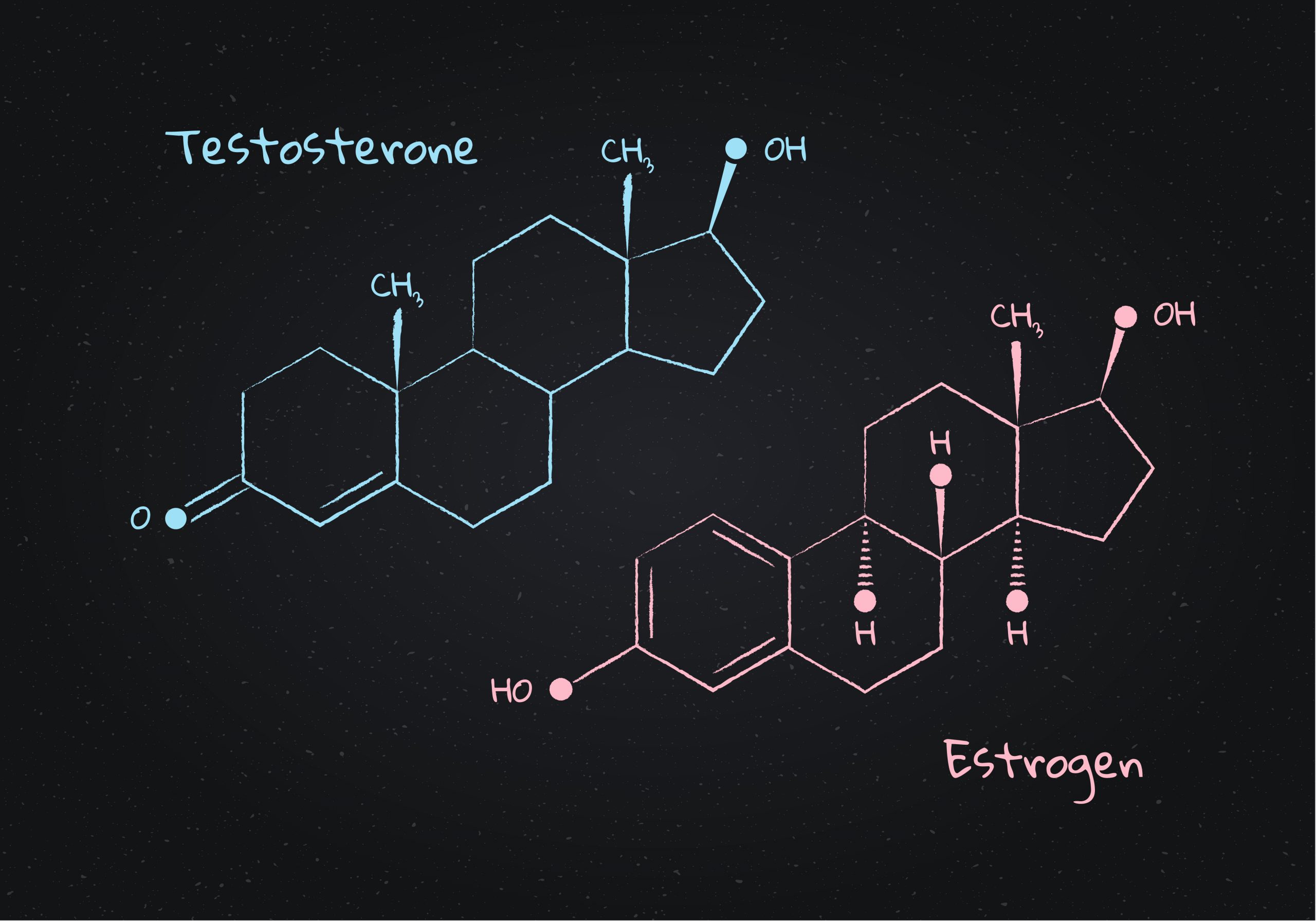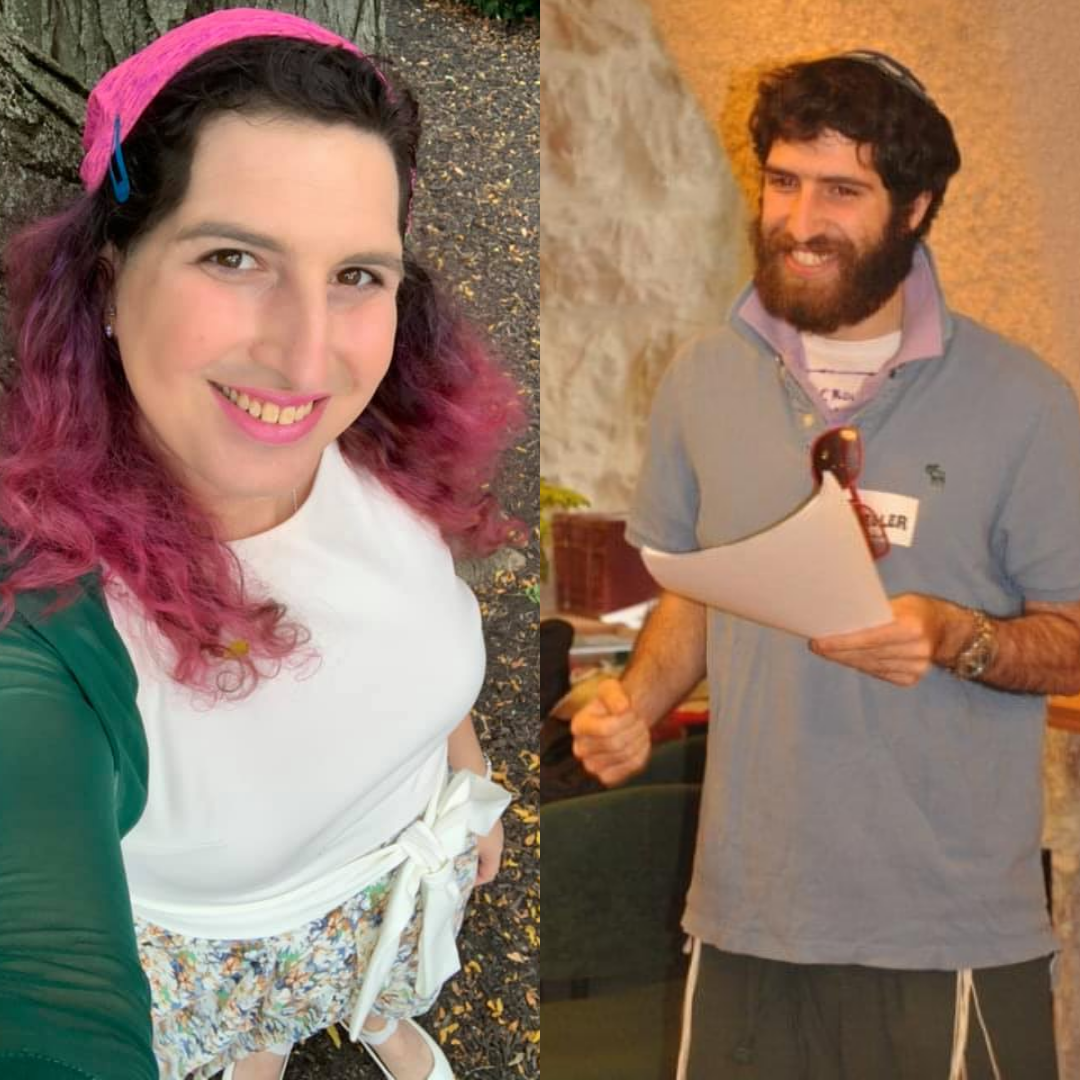
How I Changed My Body’s Biology: What It Means to Gender Transition
Written by Shuli Elisheva
(Please note: This article contains graphic descriptions of both male and female genitals.)
I’m not a man in a dress!
But so many people think I am, and honestly? How can I blame them? From earliest childhood, both science and Judaism have taught us there are only two sexes (male and female) and only two genders (man and woman). Sex and gender, so we’ve been taught, are immutably determined by our chromosomes, by the very DNA of our existence. They are, so we’ve been taught, embodied by our sex organs, which we’ve had since before we were born. “Zachar unekevah bara otam” – “Male and female, God created them.” (Genesis 1:27)
Imagine my confusion, then, when I first realized I might be transgender. I didn’t yet know what it means to transition. I didn’t understand the extent to which hormones gender our bodies, and how medical treatment can drastically feminize my body’s biology. I didn’t know anything about transgender surgeries or how gobsmackingly well surgical results can look and function like natal genitals. As far as I knew, my body was immutably male – in fact, it was not.
In this article, I want to share with you my process of transforming my body – both physically and biologically – over the course of the past two years. It has truly blown my mind, completely changing how I think about the science of sex and gender. It has been extraordinarily painful, terrifying, expensive, time-consuming, and bureaucratically nightmarish. But it has also drastically improved both my health and my quality of life, being considered by both my doctors and my health insurance as a medically-necessary treatment for gender dysphoria. You may not agree with my decisions, though as a matter of pikuach nefesh (medical necessity), I hope that you would. Regardless, my goal is for you to at least understand the process that I’ve gone through, and thereby, in the name of ahavat Yisrael (love of fellow Jews) and lo ta’amod al dam rei’echa (not standing idly by the blood of your neighbor), feel a greater sense of compassion and empathy for trans people like me.
Hormone Replacement Therapy
On December 23, 2019, I commenced hormone replacement therapy. I began taking daily estrogen supplements, along with a twice-daily anti-androgen pill called Spironolactone. Five months later, I added daily progesterone to my treatment. As a result, in less than a year, I almost completely eradicated testosterone from my body, while boosting my estrogen to average female levels.
Altering my biology in this way has drastically feminized my body. My skin and my hair became softer and thinner. My body smell changed, and my fat redistributed. My face has taken on a more feminine shape, my feet got smaller, and I’ve even shrunk two inches. My breasts have grown to a D-cup size, my rear end has become more padded, and my center of gravity shifted. My muscles have weakened, and I bruise much more easily.
I was astonished – and perhaps you will be, too – at how much my genitals have changed simply as a result of flooding my body with female hormones while suppressing my male hormones. My penis got significantly smaller, softer, and squishier. Erections became extremely painful, and I am no longer able to penetrate or ejaculate. My testicles have shrunk, and I am no longer fertile. Surprisingly, my experience of orgasms also completely changed. When driven by testosterone, they felt like a single, sudden burst in the groin. But now, driven by estrogen, they are a slow, exhausting, full-body experience that leaves me totally drained of energy. But even more surprising than that? My sexual orientation changed, and for the first time in my life, I began to feel sexual attraction to men.
My emotions changed. It feels as if I had previously experienced the world in grayscale and suddenly everything is bursting with color. Every emotion feels a thousand times stronger. I cry. I have mood swings. I crave deeper
friendships, and I feel an intense need for physical and emotional intimacy. In a very real sense, my body is going through puberty – but this time, a female one. Emotionally, I feel and behave like a teenage girl.
Clearly, I don’t have a uterus. But apparently, my hormones don’t know that. I have experienced several month-long hormonal periods, with all the symptoms minus the bleeding: bloating, headaches, fatigue, mood swings, and OH MY GOSH the CRAVINGS! (I would eat capers from a bowl with a spoon, and stuffed grape leaves by the can.) As it turns out, estrogen does not only cause the uterus to cramp – it causes ALL smooth muscle in the abdominal region to cramp, including my intestines. (This is why “period poops” are a thing.)
Surgery
Now that I’ve changed my body’s physical appearance and hormonal balance, the next step for me is surgery.
There are three common types of surgery for transgender women.
- Facial feminization surgery (FFS) transforms masculine features into feminine ones: shaving the brow ridge, shifting the hairline, augmenting the cheeks, diminishing the nose, narrowing the jawline, and more.
- Top surgery involves augmenting the breasts.
- Bottom surgery involves surgically transforming male genitals into female ones.
Thanks to the success of hormone replacement therapy, I have not needed to undergo FFS or top surgery. My face and chest have naturally feminized to the extent medically needed for treating my gender dysphoria. Next month, however, I will undergo bottom surgery.
Bottom surgery – in my case, penile-inversion vaginoplasty – is a major operation with an intense recovery. No, contrary to popular myth, surgeons do not cut off trans womens’ penises. Rather, my penis and scrotum will be transformed into a vagina, labia, and clitoris. My penis will be inverted into my body, the erectile tissue removed, and the glans repurposed as a clitoris. The skin will be used to create labia and a vaginal canal. My urethra will be rerouted inside my body to a new urethral opening above my vagina. If the procedure is successful, I will have a self-lubricating vagina, an erogenous clitoris, and realistic labia – in short, a vulva that is physically indistinguishable from that of most women.
Preparing for this surgery has been one of the most intense experiences of my life. Simply scheduling it has taken forever. Because it is a major, specialized procedure, very few surgeons are trained to perform it. I had to research a handful of surgeons in my area of the country, discovering in the process that one is undergoing lawsuits for malpractice, another doesn’t work with insurance, and two more have little experience. But one of the greatest surgeons in the world for transgender surgeries, Dr. Bella Avanessian, works just a few hours away at Mount Sinai Hospital in New York City.
The long and complex bureaucratic process began in October 2020, when I had a phone consult with a social worker at Mount Sinai. In order to even schedule a consult with the surgeon, I first had to prove that I would be able to stay with a friend within driving distance of the hospital for a full month following my
surgery; bedridden, with 24-7 care. I passed the test. But to meet with the surgeon, I would have to wait for the next available consult – 10 months later, in August 2021.
In order to have the consult with the surgeon, I also needed three letters of support from my primary care physician, therapist, and psychiatrist, confirming their diagnosis of gender dysphoria and the medical necessity of bottom surgery to treat my condition. I also received letters from other health professionals clearing me for surgery.
Meanwhile, in August 2020, I began the extremely painful process of weekly one-hour electrolysis sessions to remove all the hair from my genitals. This is to ensure that I will not grow any hair in my vagina, which can lead to infection and discomfort, since the skin from my penis and scrotum will be used to create my vaginal canal. Electrolysis, if you don’t know, means electrocuting each individual hair root, with a needle meticulously inserted, one by one, into every pore. Even with lidocaine, it was an incredibly painful procedure. And now, 14 months later, I am still continuing this excruciating, weekly process of permanently destroying my genital hair. Oh, how often I have thought to myself, when the pain felt simply intolerable: “If I weren’t really transgender, and if this weren’t a medical necessity, there’s simply no way in Hell I would EVER agree to do something like this!” But I am, and it is, so I do.
Following my surgery, I will remain in the hospital for four to five days, including over Shabbos. Then I will be discharged to a friend’s house in New Jersey, where I will recover in bed with 24-7 care. My life, I am told, will consist of eating, sleeping, watching cute cat videos on YouTube, and probably moaning a lot. Sitting will be painful, as will standing. I’ll hardly be able to walk.
In January, I can go home. But sitting and standing will still be painful, and I will spend most of my time in bed. I will be unable to drive until March. As a single parent, I will have to rely on community support for transportation, babysitting, and shopping.
This, if you can believe it, is a very short summary of the process I have gone through to change my body, both physically and biologically. Let me assure you, there is no way I would do ANY of this if it weren’t medically necessary for the treatment of my gender dysphoria. And I have not even mentioned the expenses of completely changing my wardrobe, purchasing cosmetics, and permanently removing my facial and body hair, which put me in significant debt last year. Nor have I touched on my social transition, which has involved a massive learning curve, stressful legal hurdles, and quite a large amount of terror and courage.
There are those who will not agree with my decision to transition. As I wrote at the start of this article, it is a matter of pikuach nefesh (preserving a life), and I would hope, for the sake of ahavat Yisrael (love of fellow Jews) and lo ta’amod al dam rei’echa (not standing idly by the blood of your neighbor), that at the very least they will have gained a deeper understanding of the intense, painful, time-consuming, and expensive process that most trans women go through to drastically feminize our bodies, both physically and biologically. We are not simply men in dresses. And I hope that this will inspire you towards greater compassion and empathy for your fellow Jews who happen to be transgender.

2021 2011
Related Articles
Related
At the Cross-Section of Neurodiversity and LGBTQIA
Autism, the autism spectrum, and general neurodivergence has been a hot topic for the past three decades. It’s been studied from a medical angle and from a social angle. Information is finally coming together to give society a picture of what it looks like inside the...
Crossing the Mechitza: A Transgender Perspective
One sunny day, 13 years ago, when I was in yeshiva in Jerusalem, I decided to do some grocery shopping. How vividly I remember it, all these years later! One of my friends met me by the door, as I was leaving the yeshiva. He asked if I would pick up some groceries for...
More Than Just Body Parts: The Healing Power of Transgender Surgery
In 1896, Rabbi Yosef Pallache received an unusual shayle (religious question). “Do not be surprised by this question,” the shayle cautions, “since all things are possible, and there is nothing new under the sun.” The question concerns a married woman who spontaneously...
